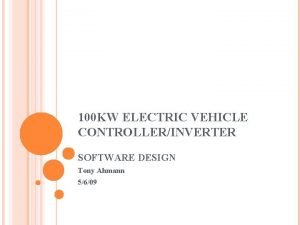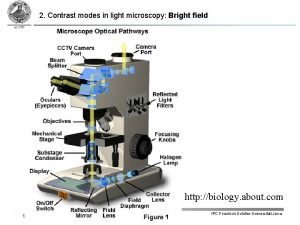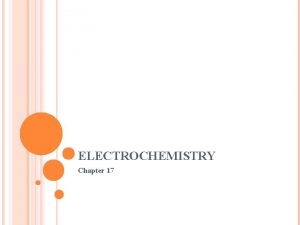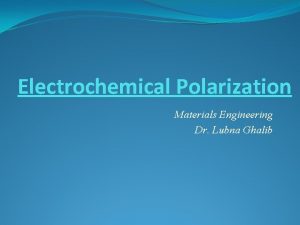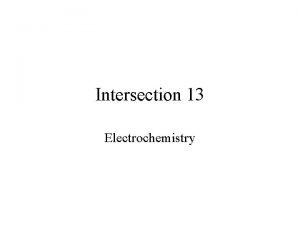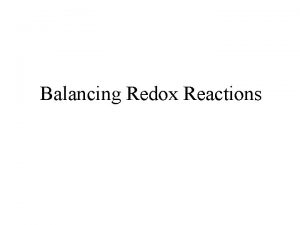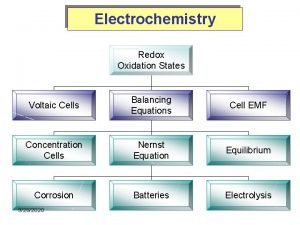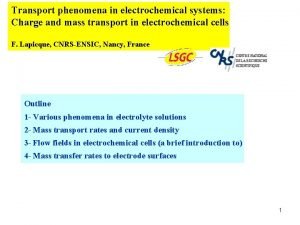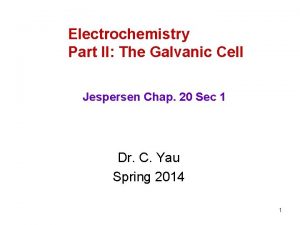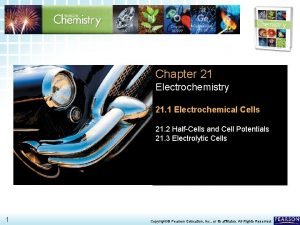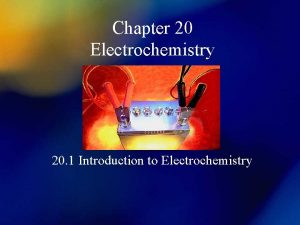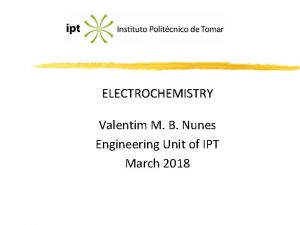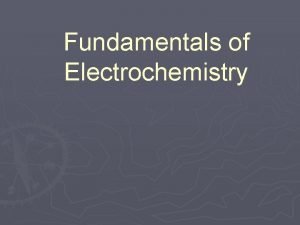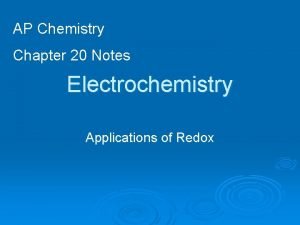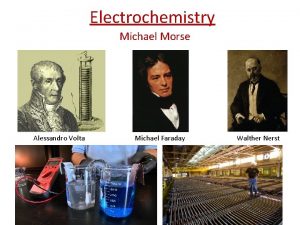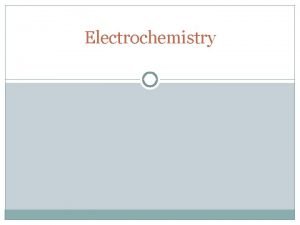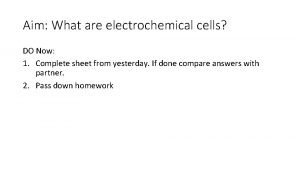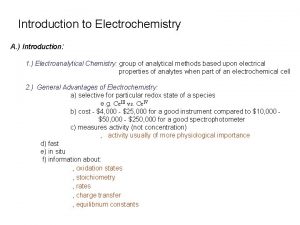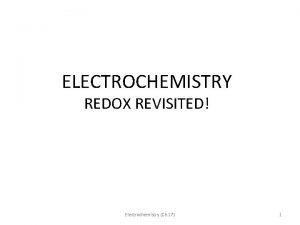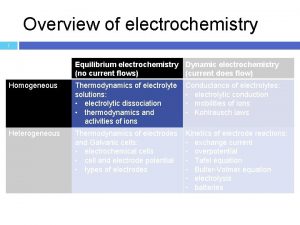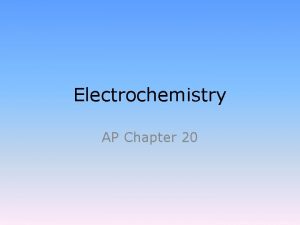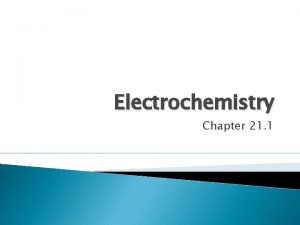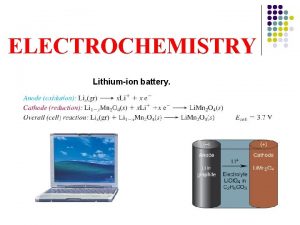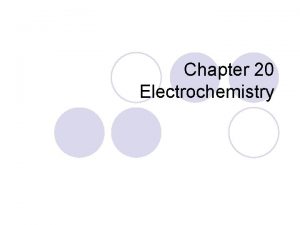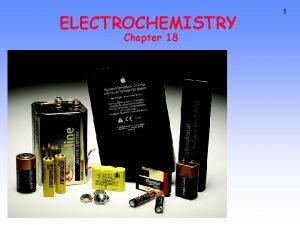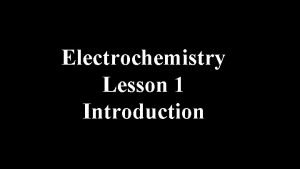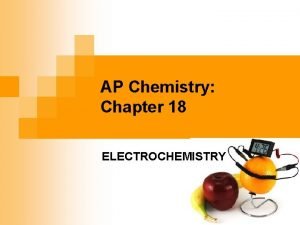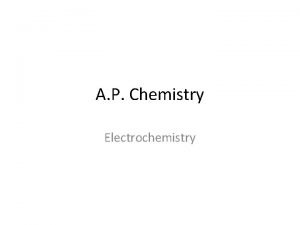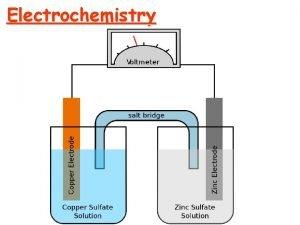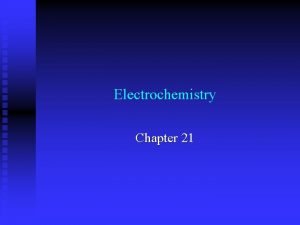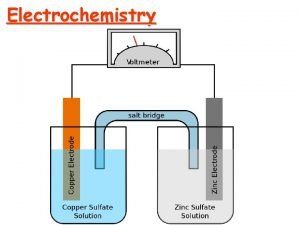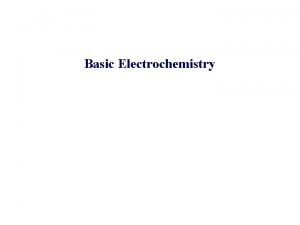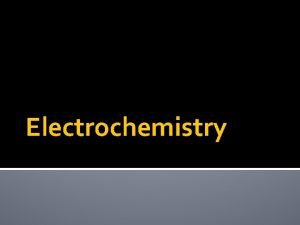Phase Field Modeling of Electrochemistry J E Guyer









































- Slides: 41

Phase Field Modeling of Electrochemistry J. E. Guyer, W. J. Boettinger, J. A. Warren & G. B. Mc. Fadden • Features common to electrochemistry & melt growth • Review of – Sharp interface model of electroplating – Interface structure • Phase field model – 1 -D Equilibrium Results Bob Sekerka NASA

• Mullins-Sekerka widely quoted and adapted to predict roughening of plated surface; e. g. Aogaki et al. (1980 -1995) • “A theory of dendritic growth in electrolytes”, D. R Hamilton, Electrochimica Acta 8 (1963) 731. Ivantsov / maximum growth rate hypothesis to fit velocity vs. overpotential data of Barton & Bockris (Ag dendrites growing from Ag. NO 3 in Na. NO 3 -KNO 3 molten salt eutectic). current~velocity; undercooling~overpotential Cu from aqueous solution: Barkey, Oberholtzer & Wu, PRL 75(1995) 2980

Plating in Narrow Trenches and Vias for Electronic Applications pores D. Josell, D. Wheeler, W. H. Huber and T. P. Moffat, Superconformal Electrodeposition in Submicron Features Physical Review Letters 87, 016102 (2001). D. Josell, B. Baker, C. Witt, D. Wheeler and T. P. Moffat, Via Filling by Electrodeposition: Superconformal Silver and Copper and Conformal Nickel, Journal of the Electrochemical Society, in press

Some possible uses of phase-field modeling in electrochemistry • Plating in submicron features – High curvatures, high electric field gradients – Avoid approximations • Pulse plating • Alloy Plating • Alloy Dissolution • Reveal new insight into relationship between interface charge distribution / adsorption and kinetics

Electrochemistry

Double Layer electrode electrolyte + + + + - +

Length Scales in Electrochemistry a) Thickness of Electrode-Electrolyte interface b) Charge separation distance (Debye layer); related to concentrations and dielectric constant c) Long range concentration decay length due to diffusion/convection in electrolyte Helmholtz model Gouy-Chapman-Stern model

Models of Interface Charge Distribution • Helmholtz Model – Sharp Electrode-Electrolyte interface – No Debye layer ( = 0) – Voltage jump at interface (“dipole layer”) – Constant differential capacitance • Gouy-Chapman Model – Sharp Electrode-Electrolyte interface – Finite Debye length (“double layer”) – Voltage continuous across interface – “Parabolic” differential capacitance • Gouy-Chapman-Stern Model – Linear voltage adjacent to electrode –“Parabolic” differential capacitance with “wings”

Interface Properties • Surface energy depends on the voltage • Electrocapillary equation • Surface charge • Differential capacitance

Cd / (F/m 2) Cd / (µF/cm 2) Differential Capacitance increasing Na. F concentration f°/V experimental data Comparison of our results with sharp interface models Ag electrode aqueous Na. F electrolyte G. Valette, J. Electroanal. Chem. 138 (1982) 37

Phase Field Model Diffuse Interface Electrode Electrolyte • Add a new phase variable, and equation • Solve over entire domain: • Phase field equation • Poisson's equation • Transport equations • No boundary conditions at interface • Treat complex interface shape / topology changes • Avoid approximations • Phase-Field Model – Diffuse Electrode-Electrolyte interface – Finite Debye length – Differential capacitance appears realistic – Long-range diffusion possible

Example of Components in Phases • Electrode is solid solution of Cu+2 and interstitial e-. • Electrolyte is aqueous solution of Cu+2, SO 4 -2 and H 2 O. • Mole Fractions • Molar Volume • Concentrations • Assume • Constraint • Ion Charge zi

Free Energy

Equilibrium • Minimization of free energy subject to: – Solute conservation – Poisson's equation –

Choice of Thermodynamics p( • Interpolation and double-well functions ) ( g ) • Ideal solution

Phase Equilibria: • Xi. L, Ref, Xi. S, Ref chosen to obtain equilibrium between a liquid solution of Cu. SO 4 in H 2 O & metal (Cu+2 + 2 e-1) zero charge plane • Dy. Ref chosen to set interface charge distribution, for Ref X’s

Interface Properties • Surface Energy • Surface Charge definitions • Differential Capacitance • Can also define adsorptions (a result, for our model)

Choice of other Parameters • Equilibrium • Double Well Heights, • Gradient Energy Coefficient, Related to: • thickness of f transition • surface energy • Dielectric constant • Numerical Calculations (First cut…) • Finite difference scheme • Evolution of dynamical equations to steady state • Insensitive to initial guess (but slow)

Equilibrium Profiles

Concentration Profiles

Voltage Decay Length in Electrolyte • Reproduces Gouy-Chapman Result • Dilute electrolyte ~ Exponential Decay Exponential fits

Traditional Double-Layer Theory (Gouy-Chapman) §Boltzmannn Distribution §Poisson Equation (more generally, there is a first integral …)

Double Layer (cont. ) • Electrolyte voltage profile • is the voltage/concentration decay length (Debye length) • Surface energy, surface charge, differential capacitance, etc. all related to voltage across interface, i. e. , • Nernst relation

Numerical Technique – Spectral Element Method

Spectral Resolution and Adaptive Strategy Fix N = 16 In each panel, monitor a. N & a. N-1 If max(|a. N|, |a. N-1|) > bisect panel and repeat until function is well-resolved on all panels

Numerical Method

Resolution of Double Layer Phase field with uniform panels Chebyshev coefficients with uniform panels Charge distribution with uniform panels Chebyshev coefficients with uniform panels

Adaptivity Charge distribution with uniform panels Chebyshev coefficients with uniform panels Charge distribution with two refinement levels Chebyshev coefficients with two refinement levels

Spectral Computation surface energy surface charge differential capacitance

Electrocapillarity Bard & Faulkner, Electrochemical Methods 2 nd Ed. , Wiley & Sons, New York (2001) after D. C. Grahame, Chem. Rev. 41 (1947) 441

Cd / (F/m 2) Cd / (µF/cm 2) Differential Capacitance increasing Na. F concentration f°/V Our results experimental data Ag electrode aqueous Na. F electrolyte G. Valette, J. Electroanal. Chem. 138 (1982) 37

Sharp Interface Limit

Numerical Solution in Outer Variables Interface width: = 0. 1 /2, /4, /8, /16

Numerical Solution in Inner Variables Interface width: , /2, /4, /8, /16

Outer and Inner Solutions

Matched Asymptotic Expansion

Matched Asymptotic Expansion

Surface Charge

Sharp Interface Limit Interface width: , /2, /4, /8, /16 = 0 (sharp)

Conclusions • Equilibrium 1 -D solutions of the model exhibit double layer behavior…. Consistent with Gouy-Chapman model, and incorporate – Decay length of electrostatic potential – Interface energy (“electrocapillary curves”), surface charge and differential capacitance all look reasonable

Current and Future Work • Continue study of sharp-interface limits • Kinetic studies underway • Explore behavior for We 0, non-constant ( ) • Explore effects of curvature (cylindrical electrode) • Adaptive Mesh in 2 -D • Alloy Plating/Corroding • Additives, Adsorption and inhibitors
 Jared guyer
Jared guyer Model and role modeling theory
Model and role modeling theory Dimensional modeling vs relational modeling
Dimensional modeling vs relational modeling Softwares can_ -in designing and modeling in every field
Softwares can_ -in designing and modeling in every field In a triangle connected source feeding a y connected load
In a triangle connected source feeding a y connected load Normal phase vs reverse phase chromatography
Normal phase vs reverse phase chromatography Normal phase vs reverse phase chromatography
Normal phase vs reverse phase chromatography Broad phase vs narrow phase
Broad phase vs narrow phase Hplc reverse phase vs normal phase
Hplc reverse phase vs normal phase Line vs phase voltage
Line vs phase voltage Mobile phase and stationary phase
Mobile phase and stationary phase Hplc detector types
Hplc detector types Stationary phase
Stationary phase Dark field vs phase contrast
Dark field vs phase contrast Data types and field properties
Data types and field properties Field dependent vs field independent
Field dependent vs field independent Field dependent definition
Field dependent definition Electric field and magnetic field difference
Electric field and magnetic field difference Difference between electric field and magnetic field
Difference between electric field and magnetic field E field h field
E field h field Field dependent vs field independent
Field dependent vs field independent Electric field and magnetic field difference
Electric field and magnetic field difference What is electrochemistry
What is electrochemistry What is polarization in electrochemistry
What is polarization in electrochemistry Electrolysis table
Electrolysis table Balancing redox reactions
Balancing redox reactions Concentration cell definition
Concentration cell definition Transport number
Transport number Whats electrochemistry
Whats electrochemistry Mass transport electrochemistry
Mass transport electrochemistry Line notation galvanic cell
Line notation galvanic cell Chapter 21 electrochemistry
Chapter 21 electrochemistry Chapter 20 review electrochemistry
Chapter 20 review electrochemistry What is electrochemistry?
What is electrochemistry? Diagonal rule electrochemistry
Diagonal rule electrochemistry Electrochemistry lesson plan
Electrochemistry lesson plan Fundamentals of electrochemistry
Fundamentals of electrochemistry Ap chem electrochemistry review
Ap chem electrochemistry review Electrochemistry
Electrochemistry Electrochemistry tutorial
Electrochemistry tutorial Voltaic aim
Voltaic aim Electroanalytical chemistry
Electroanalytical chemistry



